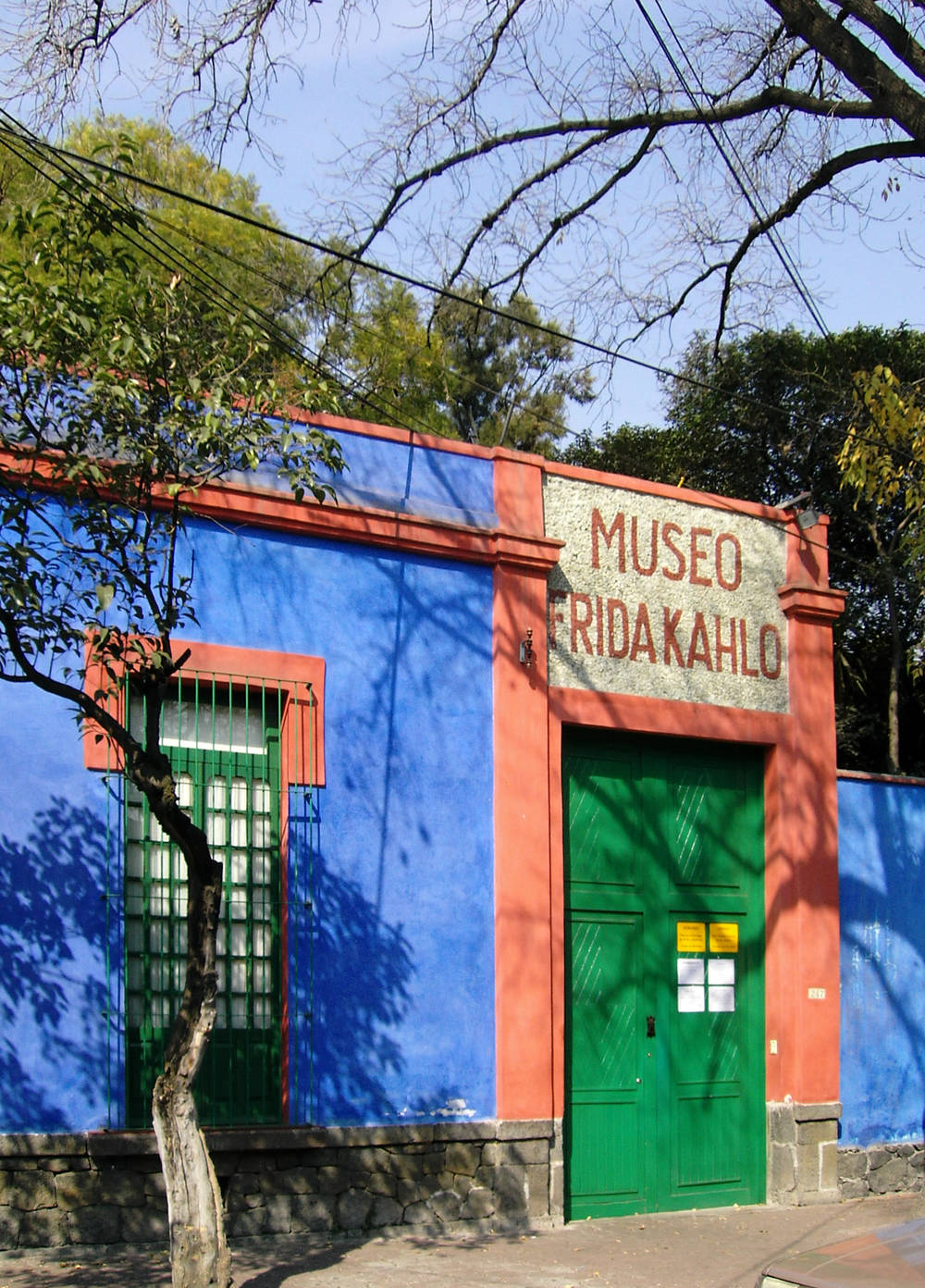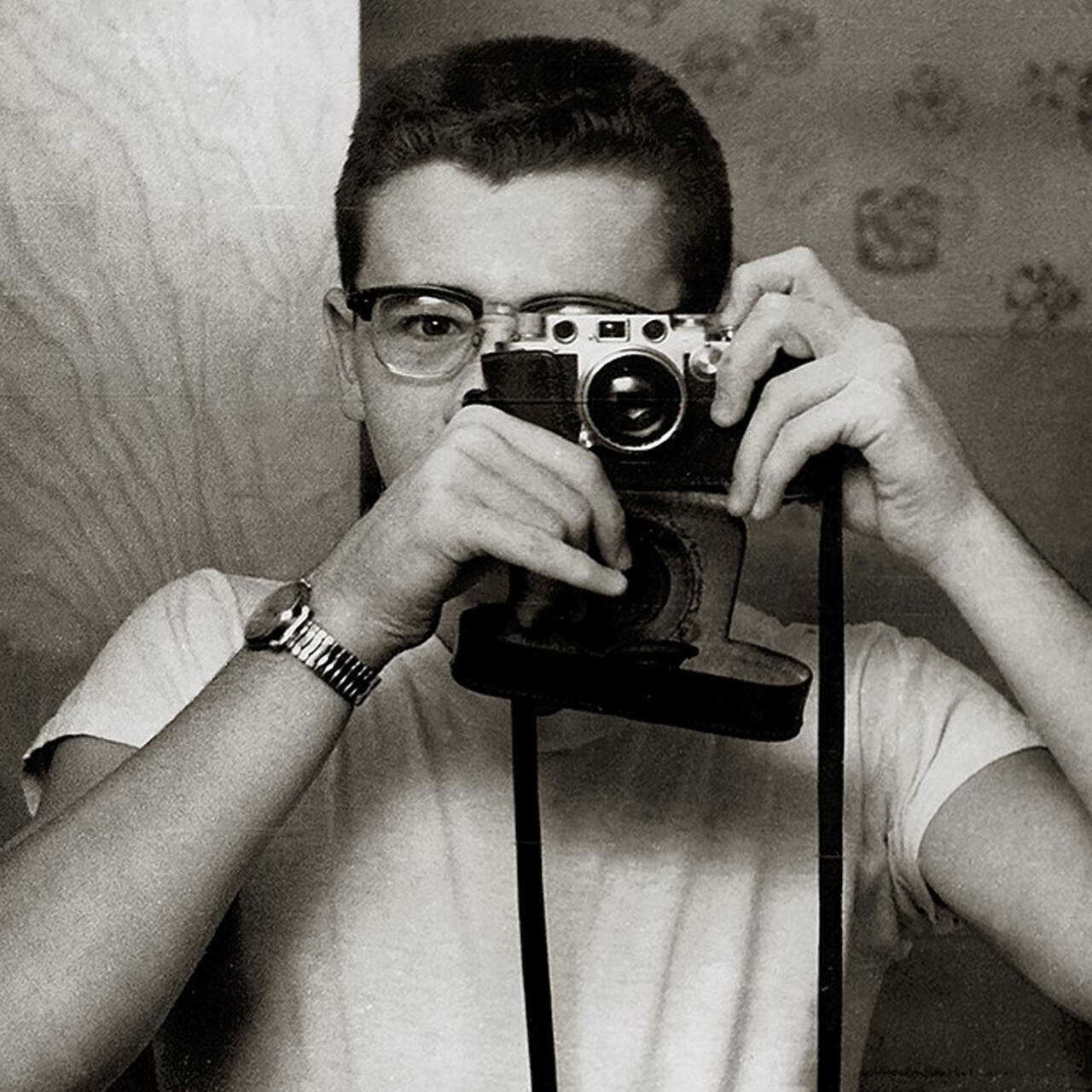Frida Kahlo has cult status. A closer look at her self-portrait can reveal a lot about the numerous myths revolving around her life and work.
ME, MYSELF AND I
“Self-Portrait with Thorn Necklace and Hummingbird” is the 43rd of a total of 143 paintings and one of 60 self-portraits in Frida Kahlo’s oeuvre. Due to her many physical complaints following a bout of polio as a child and a serious bus accident as a young woman, the artist was only too familiar with isolation and being stuck at home. Thus her tendency towards self-portraiture was a logical consequence: “I paint myself because I am so often alone, because I am the subject I know best.”
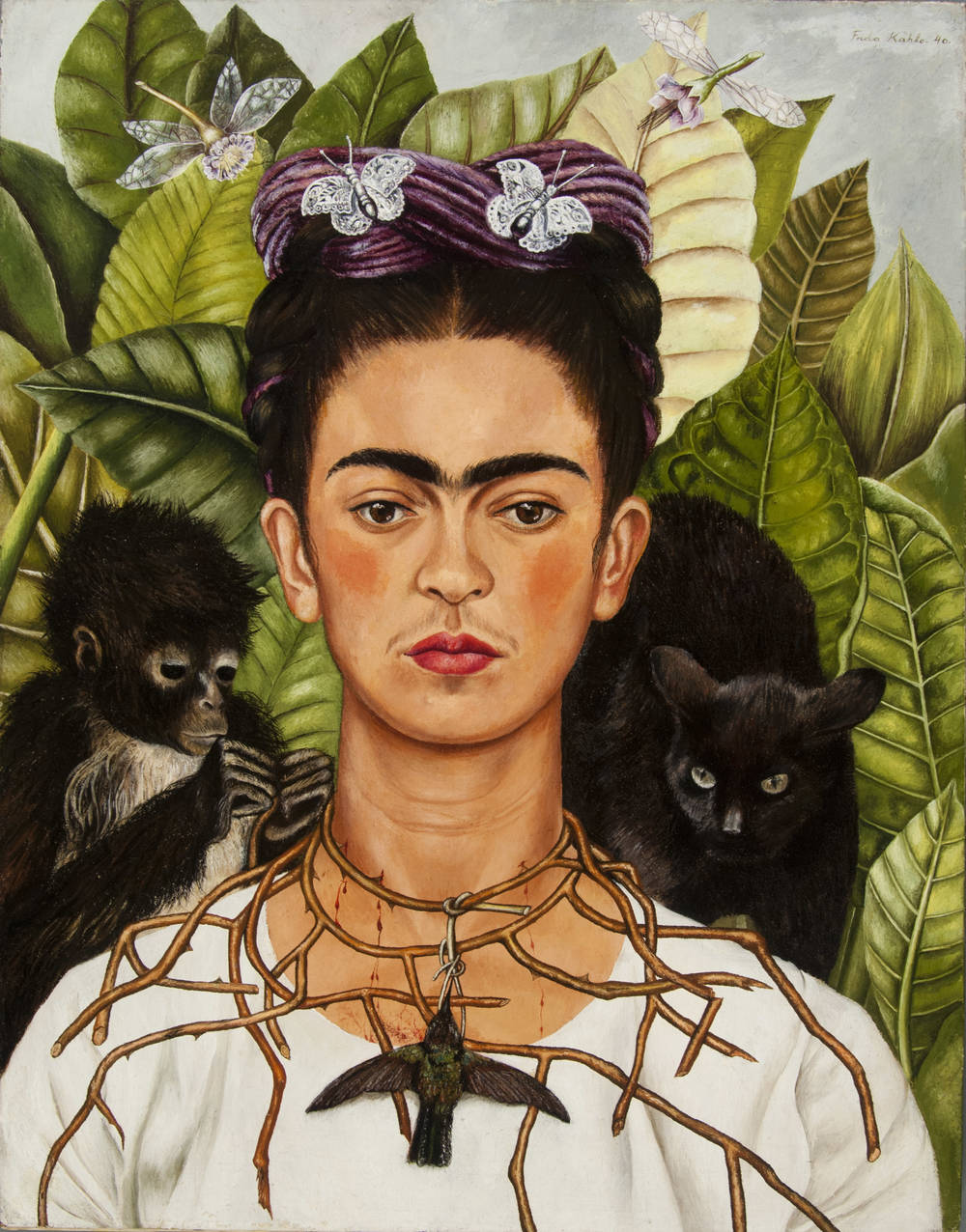
JET SET: A SELF-PORTRAIT ON THE MOVE
Frida Kahlo painted the self-portrait after her divorce from Diego Rivera and the end of her affair with photographer Nickolas Muray. The end of the love affair did not stop Muray from acquiring the portrait in order to assist the artist during a time of financial difficulty. Since 1966 it has been part of the Nickolas Muray Collection at the Harry Ransom Center of the University of Texas in Austin, and for 30 years the painting has been travelling the world: It has already appeared in more than 30 exhibitions spanning the globe from Australia to Germany.
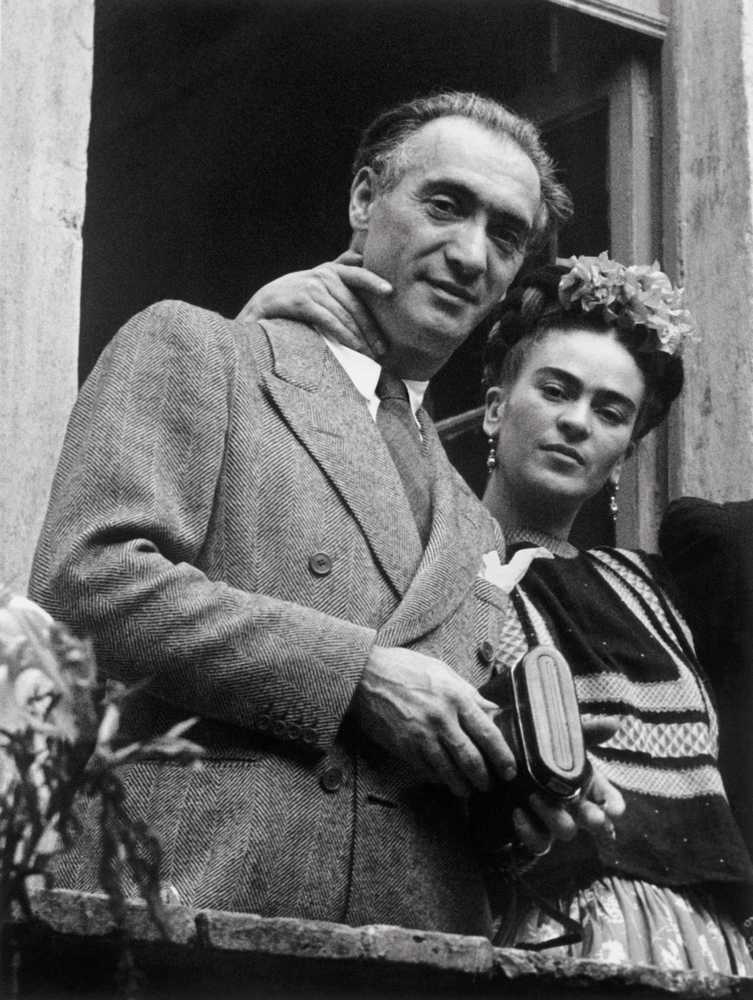
Nickolas Muray and Frida Kahlo, Photo: Nickolas Muray archive, Image via swashvillage.org
A TRANSPORT THAT FOLLOWS ITS OWN RULES
The University of Texas in Austin acquired the painting in 1966, and since 1990 it has regularly been loaned to selected international exhibitions. Its transportation, however, is quite an undertaking: It is taken from Austin to Houston by courier service and stored securely for one night, only to be flown to its destination the following day – always with a guard accompanying it. The painting has to acclimatize in the transportation crate for 24 hours before it can be opened, after which it is checked by the courier and the conservator and a condition report produced. Meanwhile a packing report records precisely how the painting was lying in the crate: face up, face down, wrapped in film, etc. After all that, it can finally be hung. The accompanying guard from the courier service will only leave once the painting is securely attached to the wall.
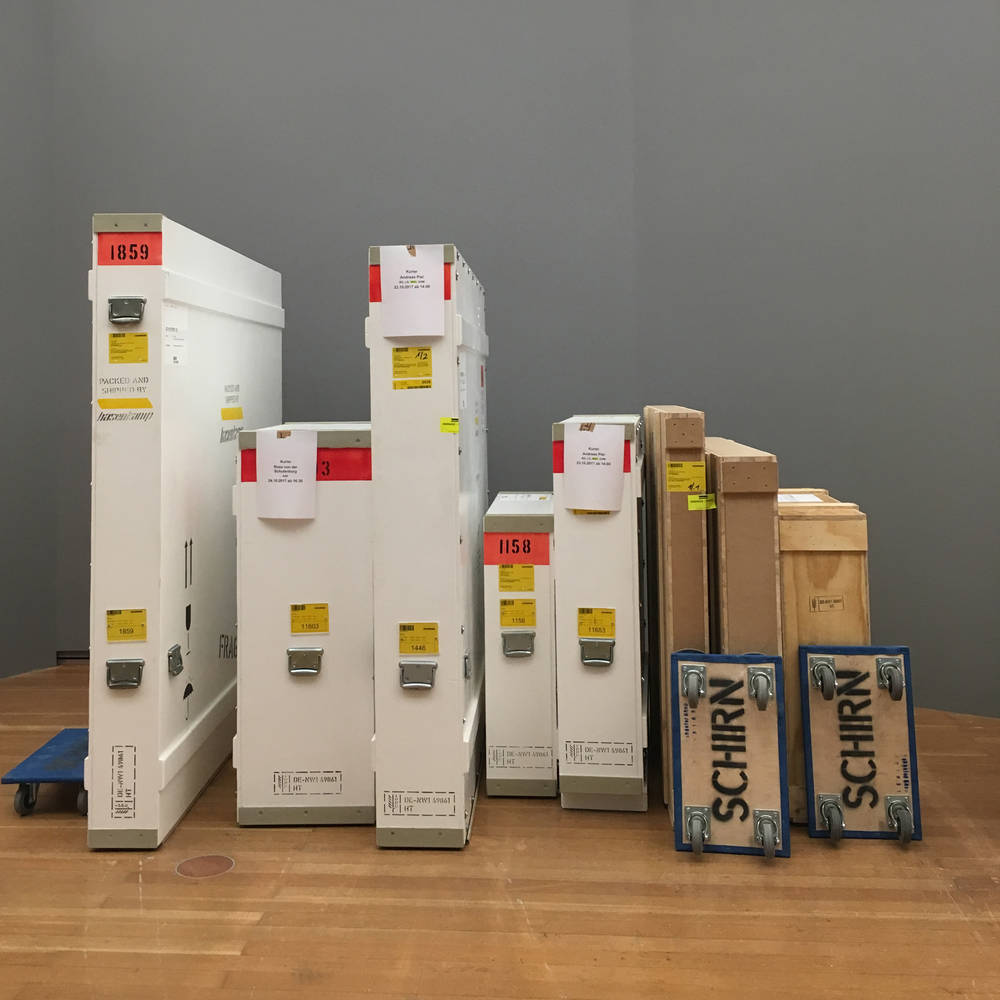
THE SURREALISM IS IN THE DETAIL
Frida Kahlo looks us proudly in the eyes. Her hair is in braids which she has tied up with a purple scarf. Adorned with two silver butterflies, it almost resembles a crown. The butterfly is a symbol of regeneration and rebirth, and Kahlo, who had suffered a series of traumatic miscarriages, frequently makes use of such allegories in her work. A particularly creative feature is the two dragonflies circling around her head. Their bodies are made of calyces – a Surrealist detail that only becomes recognizable on closer inspection.
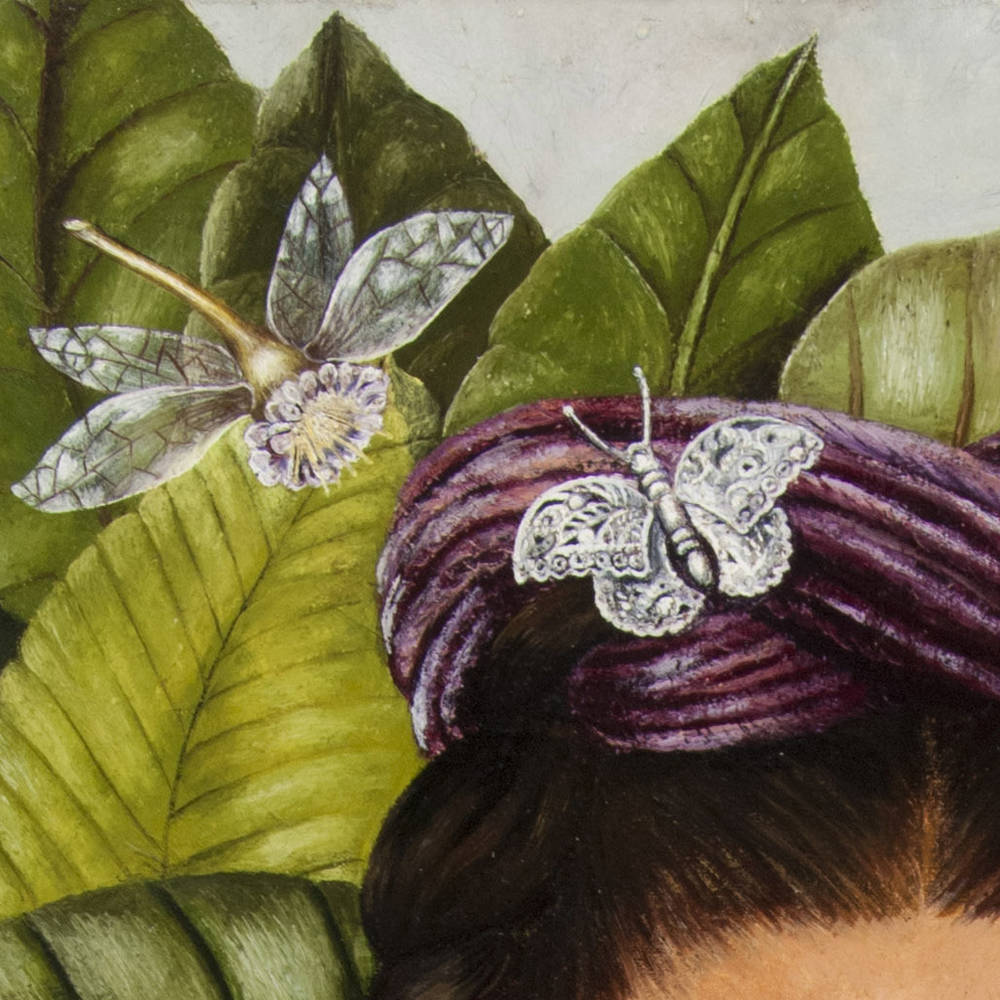
BLACK CAT MEETS SPIDER MONKEY
Frida Kahlo loved animals and had her own little zoo at the “Casa Azul”. Some of the animals made their way into her paintings, like the monkey she was given by her husband Diego Rivera. The spider monkey that appears in the “Self-Portrait with Thorn Necklace and Hummingbird” can be considered a direct reference to Rivera: He pulls firmly on the thorn necklace so that the thorns painfully pierce her skin. Is this a reference to her recently failed marriage? On her left shoulder sits a black cat, which is often interpreted as a symbol for misfortune and death. It is also associated with magic, appearing in fairy tales as the unmistakable companion of witches. The cat looks directly at the observer, and with its back arched appears ready to pounce at any moment.
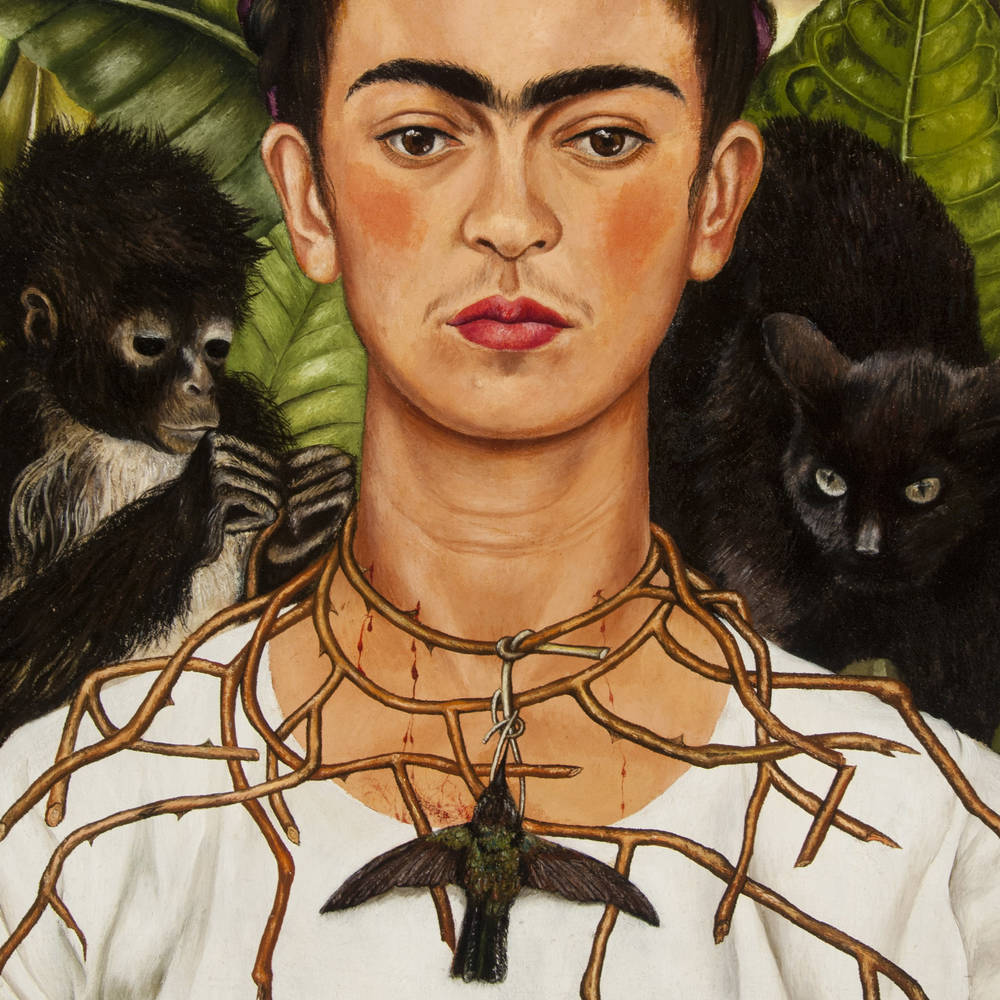
FRIDA CHRIST SUPERSTAR?
This self-portrait bristles with creatures laden in symbolism and objects that have often been interpreted as an expression of Kahlo’s feelings. Naturally, the thorn necklace with the drops of blood evokes associations with Jesus and his crown of thorns. Whether or not Frida Kahlo actually wanted to present herself as a martyr here, or whether the pain caused by the thorns is rather a symbol of her failed marriage is something observers have to decide for themselves.
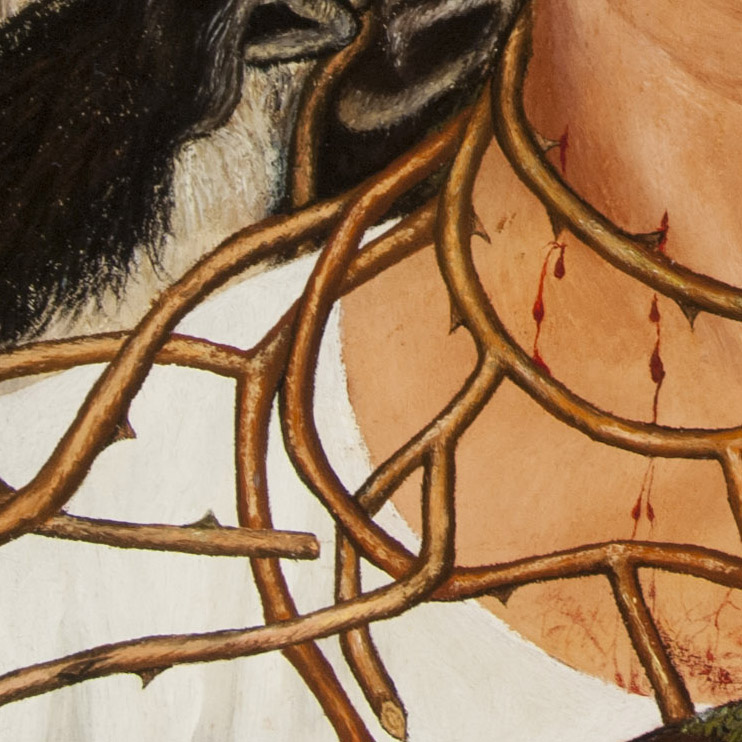
BLOODY MYTHS REVOLVE AROUND THE HUMMINGBIRD
Like a pendant, a hummingbird with shimmering dark-green feathers is attached to Kahlo’s thorn necklace. With its long wings spread and its narrow beak, the form of the little bird is like a cross and thus links up again to the Christian symbol of the crown of thorns. In contrast to the familiar interpretation of the hummingbird as a power animal that supposedly brings love, hope and happiness, its symbolism in Mexican folklore is much more ambivalent. In Aztec mythology, Huitzilopochtli, the god of war, takes the form of a hummingbird. As a depiction of the god of war, the lifeless hummingbird at Frida Kahlo’s throat appears as a tragic symbol for sacrifice and hopeful devotion.
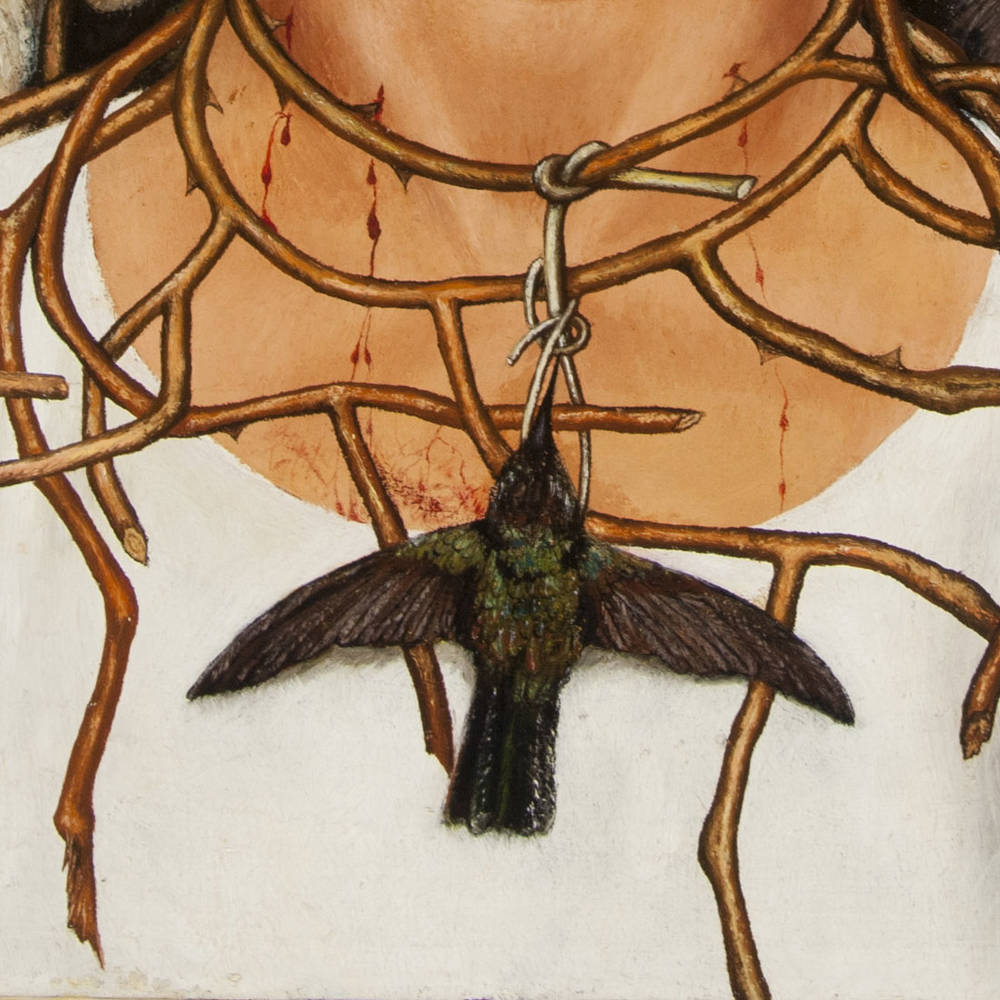
MAGICAL ENCOUNTERS IN MEXICO
The Surrealist network stretched across France, Germany, Spain, Great Britain and beyond to the United States and Mexico. A turning point in Kahlo’s career was the visit André Breton and Jacqueline Lamba paid to Mexico in 1938, out of which a (lifelong) friendship evolved between Kahlo and Lamba. Just one year later, Frida Kahlo presented her works in Paris for the first time, coming into contact with the artist Alice Rahon and the Spanish painter Remedios Varo – both of whom resettled in Mexico after World War II broke out. The wealth of pre-Colombian culture and the abundance of nature and folk art in Mexico, which also find their way into Kahlo’s self-portrait, served as a source of inspiration for the European exiles and helped bringing about a renewal of Surrealism – with Frida Kahlo at its center.

Frida Kahlo and Jaqueline Lamba, Image via tumblr.com
FRIDAMANIA
When Frida Kahlo died in 1954, she was celebrated in her homeland of Mexico – yet in the rest of the world she was known at most to a small circle of people. It was only with the retrospective at the Whitechapel Gallery in London in 1982 and the appearance of Hayden Herrera’s biography of Kahlo one year later that she started to take the international limelight. And with each subsequent exhibition her fame grew: Frida Kahlo is now an icon, and her life story and body of work remain a source of great fascination. Long after her death, there has emerged a veritable “Fridamania”: Her face is familiar to everyone and adorns a variety of merchandise – from socks to shower curtains – while her unmistakable look has found its way into popular culture. Not only is Madonna a dedicated fan (and collector) of the artist; the “Self-Portrait with Thorn Necklace and Hummingbird” is also the most photographed work in the FANTASTIC WOMEN exhibition with more than 1,000 tags on Instagram.
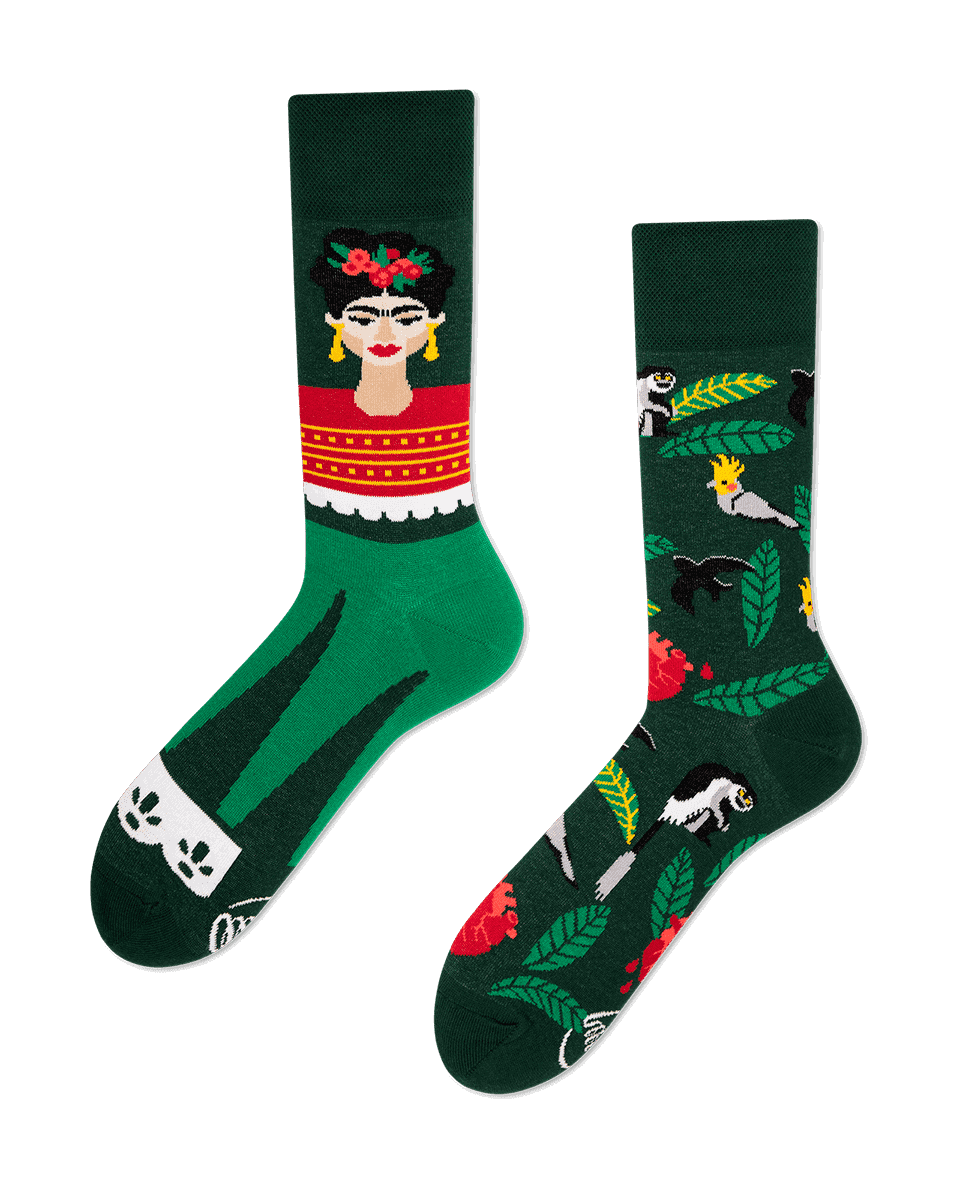
Frida Kahlo socks, Image via manymornings.com
WHO KNEW?
As early as 1993, the SCHIRN dedicated a large retrospective to the Mexican artist and showed more than 50 paintings and works on paper. The insight into Kahlo’s oeuvre was supplemented with works by Diego Rivera and other friends of the artist. The exhibition with the title “The World of Frida Kahlo - The Blue House” started off with the reconstruction of Kahlo’s bedroom - bed, pillow, blanket and Mexican costumes included. Frida Kahlo spent almost her entire life in the so-called Blue House in Mexico City. Today a museum, it was one of the centers of the surrealist avant-garde during Kahlo's lifetime.
